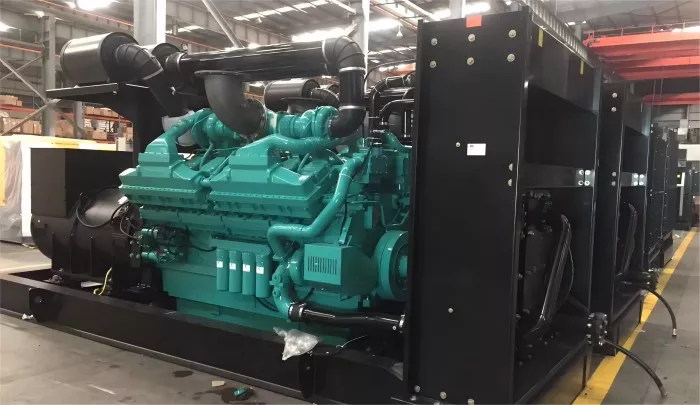Operating a diesel generator safely and efficiently requires understanding the equipment, following the correct procedures, and conducting regular maintenance. This guide provides a detailed overview of the steps involved in operating a diesel generator, ensuring optimal performance and longevity.
1. Preparation Before Starting
1.1 Safety Precautions
Read the Manual: Before operating the generator, thoroughly read the manufacturer’s manual to understand the specific requirements and safety measures.
Personal Protective Equipment (PPE): Wear appropriate PPE, including gloves, safety glasses, and ear protection, to protect against potential hazards.
Check Surroundings: Ensure the generator is placed in a well-ventilated area, away from flammable materials and moisture. Verify that the exhaust is directed away from people and structures.
1.2 Pre-Start Inspections
Fuel Level: Check the fuel level and ensure it is sufficient for the expected run time. Top up if necessary.
Oil Level: Inspect the engine oil level using the dipstick. Add oil if needed, making sure to use the type recommended by the manufacturer.
Coolant Level: Check the coolant level in the radiator or coolant reservoir. Refill with the appropriate coolant mixture if required.
Battery Condition: Ensure the battery is charged and the connections are clean and secure.
Air Filter: Inspect the air filter for dirt and debris. Clean or replace it if necessary.
2. Starting the Generator
2.1 Manual Start
Turn Off All Loads: Before starting the generator, make sure all electrical loads are turned off to prevent overloading during startup.
Turn On Fuel Supply: Open the fuel valve to allow diesel to flow to the engine.
Activate the Ignition: Turn the ignition switch to the ‘On’ position.
Prime the Engine: If the generator has a manual fuel pump, prime the engine by pumping fuel into the fuel system.
Start the Engine: Pull the recoil starter or press the start button to start the engine. If it does not start, wait a few seconds and try again.
2.2 Electric Start
Turn Off All Loads: Ensure all electrical loads are turned off.
Turn On Fuel Supply: Open the fuel valve.
Activate the Ignition: Turn the ignition switch to the ‘On’ position.
Start the Engine: Press the electric start button. The engine should start without manual effort.
3. Operating the Generator
3.1 Warm-Up Period
Allow Warm-Up: Let the generator run for a few minutes without load to allow the engine to reach its operating temperature.
3.2 Connecting Loads
Gradual Load Application: Gradually add electrical loads to the generator, starting with the largest loads first. This helps prevent sudden surges that could damage the generator.
Monitor Performance: Continuously monitor the generator’s performance, checking for any unusual noises, vibrations, or smoke.
3.3 Regular Monitoring
Check Gauges: Regularly check the fuel gauge, oil pressure gauge, temperature gauge, and voltmeter to ensure the generator is operating within normal parameters.
Refuel Safely: If refueling is necessary, turn off the generator and allow it to cool before adding fuel to prevent fire hazards.
4. Shutting Down the Generator
4.1 Load Disconnection
Turn Off Loads: Before shutting down the generator, turn off all connected electrical loads.
4.2 Cool Down Period
Allow Cool Down: Let the generator run without load for a few minutes to cool down the engine gradually.
4.3 Shutdown Process
Turn Off Ignition: Turn the ignition switch to the ‘Off’ position to stop the engine.
Close Fuel Supply: Close the fuel valve to prevent fuel from leaking into the engine.
see also: How Often Should a Diesel Generator Be Serviced
5. Post-Operation Maintenance
5.1 Routine Checks
Inspect for Leaks: After shutting down, inspect the generator for any fuel, oil, or coolant leaks.
Check Oil Level: Verify the engine oil level and top up if necessary.
Clean Air Filter: Check the air filter and clean or replace it if needed.
5.2 Scheduled Maintenance
Regular Service: Follow the manufacturer’s recommended maintenance schedule for oil changes, filter replacements, and other routine services.
Battery Maintenance: Keep the battery terminals clean and check the electrolyte levels if applicable.
Record Keeping: Maintain a log of operating hours, fuel consumption, and maintenance activities to monitor the generator’s performance and schedule future maintenance.
Conclusion
Operating a diesel generator involves a series of well-defined steps to ensure safety, efficiency, and longevity. By following this guide, you can effectively manage your generator’s operation, from pre-start inspections to post-operation maintenance. Proper handling and regular maintenance will ensure that your diesel generator remains a reliable power source for years to come.
Related topics:
- Why Diesel Generators are So Expensive?
- How to Choose Silent Diesel Generators for Home Use
- Understanding Diesel Generators: AC or DC?

